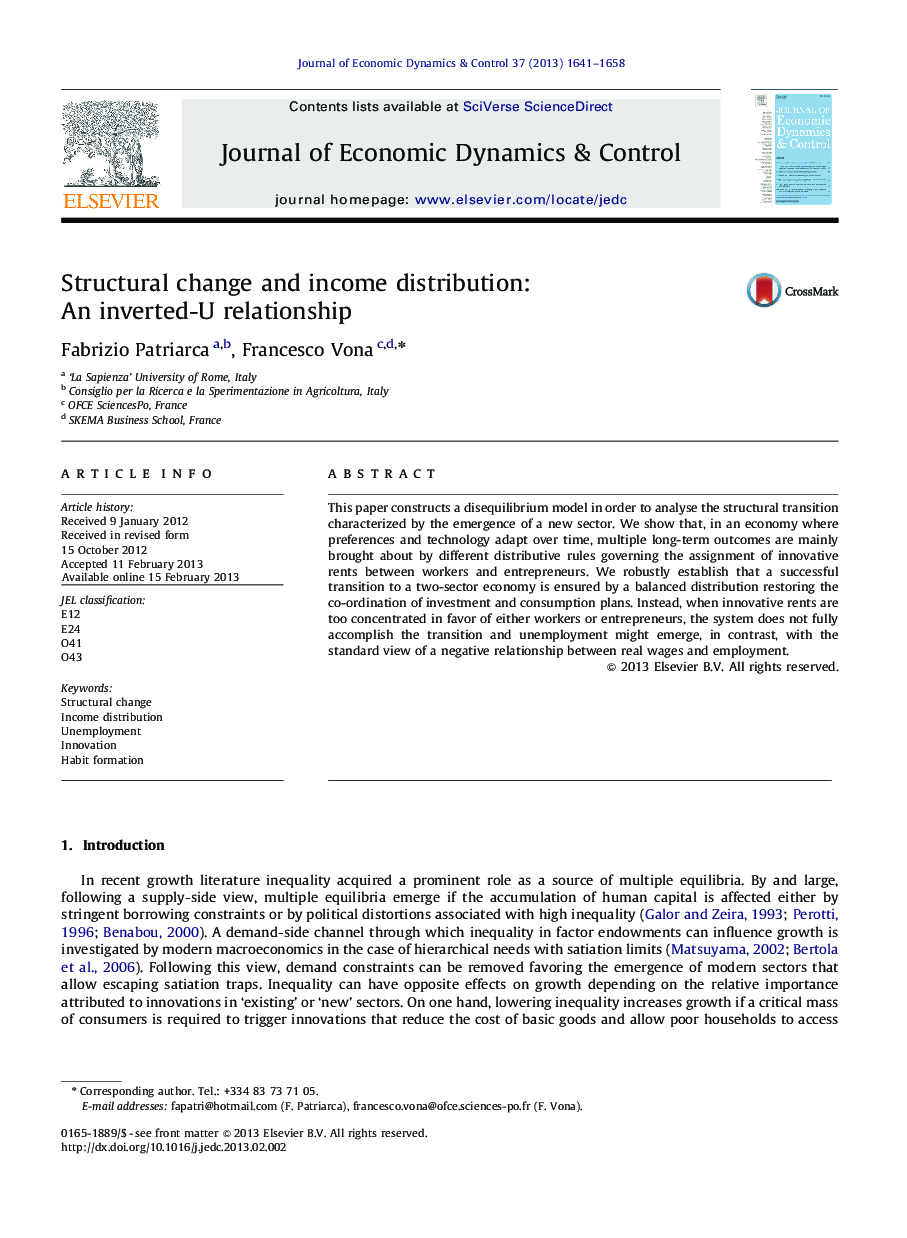| Article ID | Journal | Published Year | Pages | File Type |
|---|---|---|---|---|
| 5098802 | Journal of Economic Dynamics and Control | 2013 | 18 Pages |
Abstract
This paper constructs a disequilibrium model in order to analyse the structural transition characterized by the emergence of a new sector. We show that, in an economy where preferences and technology adapt over time, multiple long-term outcomes are mainly brought about by different distributive rules governing the assignment of innovative rents between workers and entrepreneurs. We robustly establish that a successful transition to a two-sector economy is ensured by a balanced distribution restoring the co-ordination of investment and consumption plans. Instead, when innovative rents are too concentrated in favor of either workers or entrepreneurs, the system does not fully accomplish the transition and unemployment might emerge, in contrast, with the standard view of a negative relationship between real wages and employment.
Related Topics
Physical Sciences and Engineering
Mathematics
Control and Optimization
Authors
Fabrizio Patriarca, Francesco Vona,
